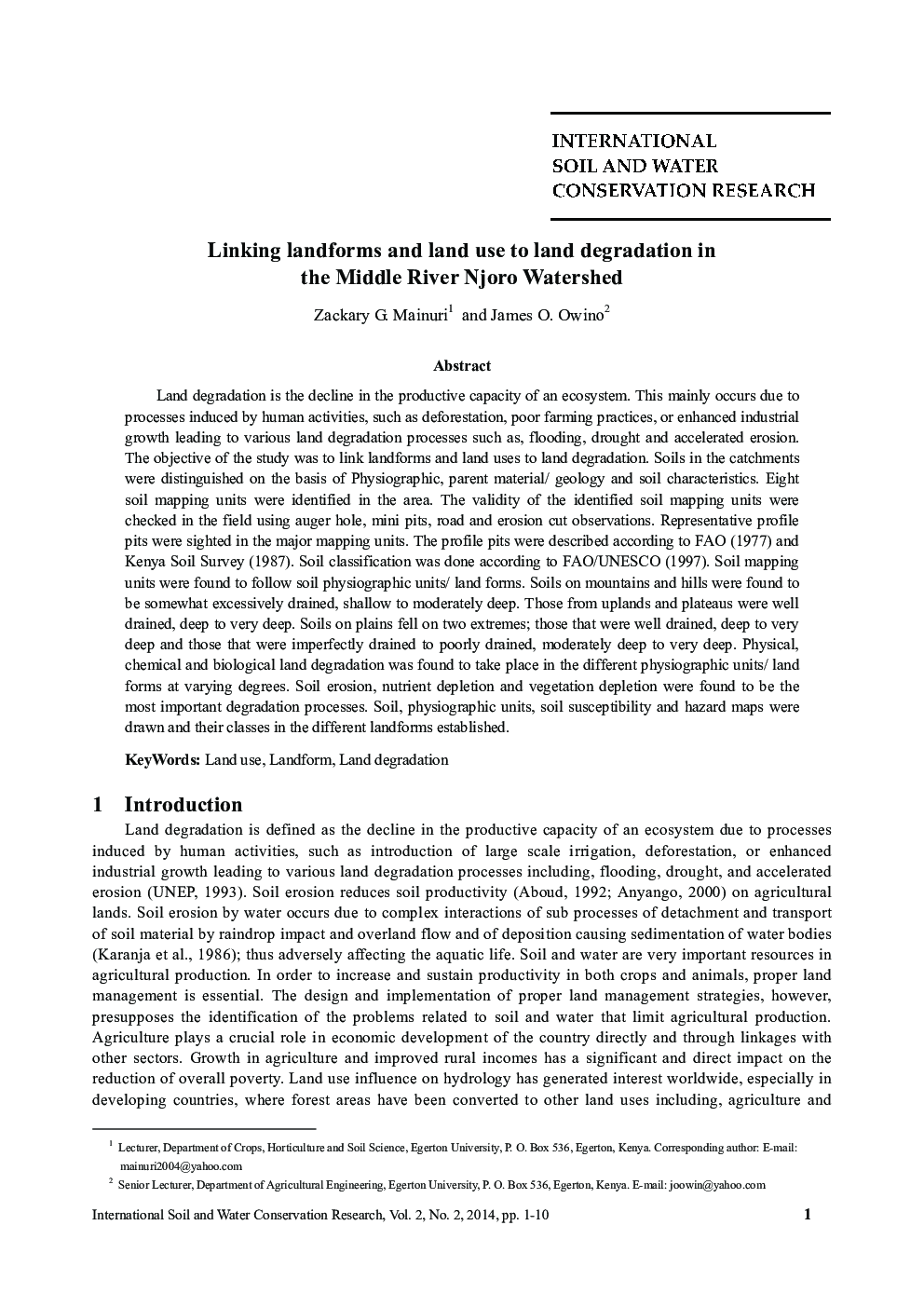| Article ID | Journal | Published Year | Pages | File Type |
|---|---|---|---|---|
| 4452148 | International Soil and Water Conservation Research | 2014 | 10 Pages |
Land degradation is the decline in the productive capacity of an ecosystem. This mainly occurs due to processes induced by human activities, such as deforestation, poor farming practices, or enhanced industrial growth leading to various land degradation processes such as, flooding, drought and accelerated erosion. The objective of the study was to link landforms and land uses to land degradation. Soils in the catchments were distinguished on the basis of Physiographic, parent material/ geology and soil characteristics. Eight soil mapping units were identified in the area. The validity of the identified soil mapping units were checked in the field using auger hole, mini pits, road and erosion cut observations. Representative profile pits were sighted in the major mapping units. The profile pits were described according to FAO (1977) and Kenya Soil Survey (1987). Soil classification was done according to FAO/UNESCO (1997). Soil mapping units were found to follow soil physiographic units/ land forms. Soils on mountains and hills were found to be somewhat excessively drained, shallow to moderately deep. Those from uplands and plateaus were well drained, deep to very deep. Soils on plains fell on two extremes; those that were well drained, deep to very deep and those that were imperfectly drained to poorly drained, moderately deep to very deep. Physical, chemical and biological land degradation was found to take place in the different physiographic units/ land forms at varying degrees. Soil erosion, nutrient depletion and vegetation depletion were found to be the most important degradation processes. Soil, physiographic units, soil susceptibility and hazard maps were drawn and their classes in the different landforms established.
